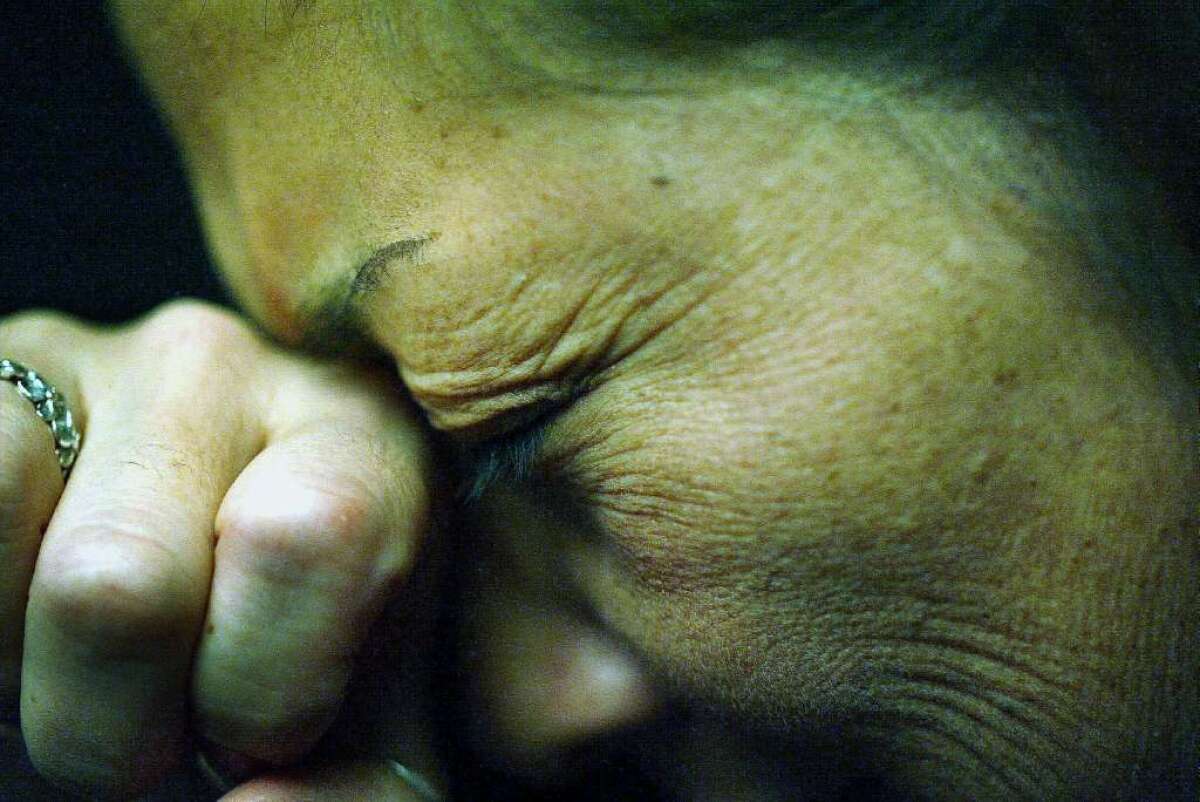Migraine could be associated with brain damage, study warns

That head-splitting migraine attack that knocks you off your feet may also put you at risk of permanent changes in the brain, an analysis of 19 medical studies found.
The potential for increased abnormalities in the signal-carrying white matter of the brain appears strongest among those who suffer headache warning symptoms, such as flashes of light, blind spots and tingling, according to the analysis published online Wednesday in the journal Neurology. Those “migraine with aura” sufferers were about 1.7 times as likely to have such anomalies than were the non-migraine population, the analysis found.
But the significance of these white-matter blips and other tissue changes remains elusive, and there is some question about whether the neurological variances from the norm mark a migraine-prone brain or the ravages of the attacks, researchers said.
At best, doctors have concluded that what they see on patients’ magnetic resonance imagery amounts to a “benign imaging correlate” of migraine. They’re there, they are associated with migraine, and that’s where the hard evidence stops.
“Part of the message I hope to communicate here is: If you have migraine with aura and you have white-matter lesions, they’re probably not a cause of concern,” said study coauthor Dr. Richard B. Lipton, a neurologist who heads the Montefiore Headache Center in the Bronx, N.Y.
Migraine headaches affect about 10%-15% of the population, about a third of whom experience aura symptoms, according to the study. The symptoms can cause substantial impairment and hardship, including lost work hours and high medical costs.
Though research centers have sprung up at medical centers such as Montefiore, methods of studying the malady have varied enough that a comprehensive analysis of data proved difficult. Of the 19 studies covered in the analysis, for example, only one followed a sample through time, and that sample was relatively small and covered less than nine years. Results of 13 clinic-based studies, on the other hand, can be difficult to generalize because the samples are skewed to those already in treatment. Even the estimates of the prevalence of white-matter anomalies among migraine sufferers ranged from 4% to 59%, the meta-analysis found.
Still, enough data have accrued to recommend therapies that reduce the incidence of migraine, particularly among those with aura symptoms who may also have additional risk factors for stroke, Lipton said. Other studies have suggested that those who suffer from migraine with aura have twice the risk of a stroke, Lipton noted.
“If you have migraine with aura, certainly you shouldn’t smoke,” Lipton said. “Certainly, if you are going to use oral contraceptives, you should use the lowest possible hormonal dose. If you have other stroke risk factors such as hypertension or diabetes or high cholesterol, it becomes particularly important to manage those risk factors.”
That “you never know” approach, Lipton said, has the added benefit of short-term improvements in quality of life.
But the inconclusive nature of the analysis leaves big questions unanswered, said Dr. Peter Goadsby, a neurologist who heads UC San Francisco’s headache lab, who was not involved in the analysis. “A meta-problem with the area,” he said, “is people with migraine don’t die. That’s good, because people not dying is very good. However, it does limit what you say if you can’t see what the pathology is. And therein lies the problem.”
Studies of the tiny lesions that have the appearance of a stroke scar proved mostly inconclusive, according to the analysis. And it turned up no significant evidence of cognitive decline or other neurological symptoms from such lesions or other white-matter anomalies. Whether these lesions are evidence of undiagnosed mini-strokes remained unclear as well.
Perhaps more disconcerting is the ambiguity surrounding the direction of the correlations that were found. It may just be that strange white-matter phenomena on magnetic resonance images are intriguing hints at what makes for a migraine-prone brain, Lipton and Goadsby said.
“All of these things come back to one overarching question, and that is whether the brain of the migraine patient starts out different,” Goadsby said.







